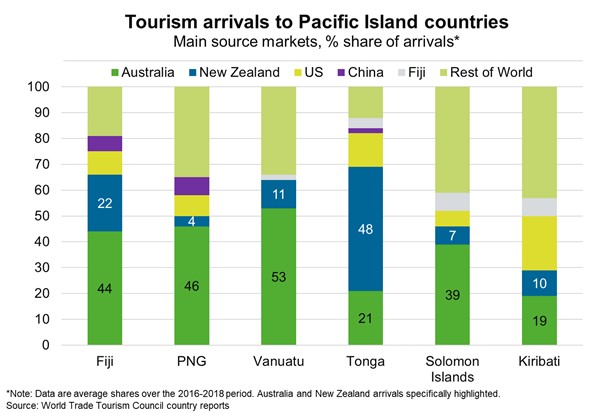Pacific—Tourism faces challenges and opportunities beyond pandemic
Before COVID-19 hit, rising tourism boosted GDP and incomes and supported economic development in Pacific Island countries. Despite nascent recovery from the COVID-19 induced global economic downturn, 2021 will be another challenging year for tourism. Until vaccination programs reach critical mass, ongoing international travel restrictions will hurt jobs and output in sectors such as retail, accommodation, restaurants and transportation.
Thereafter, the speed of the tourism recovery remains highly uncertain. Weak growth in incomes and jobs is likely to weigh broadly on international tourism even once borders reopen. The IMF suggests that, as a result of economic scarring, ascending back to pre-pandemic levels of tourism will most likely take three years. However, changed consumer preferences could see demand for longer-distance travel fall, while pent-up demand for short-haul leisure travel could benefit Pacific Island countries. Pacific Island countries have managed the public health crisis relatively well—many have avoided any community transmission of COVID-19, while others haven’t recorded a local case in months. The outlook is also supported by strong economic recoveries in neighbouring Australia and New Zealand—among the region’s largest source of tourists (Chart).
Recovery in Pacific tourism is important for Australian exporters, offering opportunities for food and beverages exporters to supply hotels and supermarkets. Investment and export opportunities are also significant for construction and building trades to support development of hotels, other commercial property and infrastructure in the region. Exports to Pacific Island countries totalled more than $4.5 billion in 2019-20, 1% of all exports.

